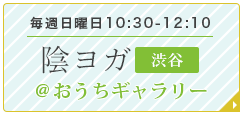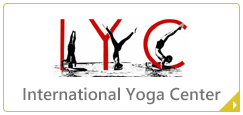ブログ
| ブログ
Facebookにて、私たちの本家本元、ビクター先生率いるYIN YOGA in ASIAの投稿を、Yin Yoga Japanの川畑友季湖先生が日本語訳してくださったものをここでもシェアさせていただこうと思います。
友季湖先生の承諾を得て掲載しています。
Yin Yoga Japan
公式ホームページは→こちら
公式Facebookページは→こちら
—
こうして文章で読むことができるのは貴重だしとてもありがたいことですね。
練習生ならピンとくるのではないでしょうか。
ぜひ日頃陰ヨガを練習している方は、ビクター先生の言葉に触れてみてください。
—
(転載ここから)
↓↓↓
YIN YOGA in ASIAからの翻訳第五弾です。
(無断転載はお断り致しますが、シェアは歓迎致します。)
直訳するとなんだかわからない文章ですが、内容はいつもクラスで言っていることですね。
陰ヨガの動きは筋肉を鍛えるような動きではなく、筋力は最小限に、重力を利用して動く、いわばエコノミックな省エネの動きです。その動きの本質を知るには太極拳や気功のような動きと、力を伝える筋膜の理解が不可欠だということです。
そして、ポーズ中に寝落ちするような誤ったリラックスは存在しません。
実践の中でのみ、このトピックの本当の意味を知ることが出来ます。実際にクラスに参加して、GRF(地面反作用)を感じてみましょう。
ーーーーーーーーーーーーーーーーーーーーーーーーーーーーー
動きと動作中の重力を理解する。
このトピックについて議論するヨギはほとんどいませんが、太極拳のマスターと生徒の間では常にこの議論を見ることができます。 現実には、身体は重力で引っ張られた空間の中で動いています。 それなしでは身体のいかなる動きも起こらないでしょう。 従って、動きにおける重力の働きは本当に重要なトピックです。
特に陰ヨガでは、GRF(地面反作用)と共に動いているため、重力について長い間考慮してきました。 また、筋力を過度に使用することなく、体に最大限の重力を加えて、筋膜の深層部まで浸透させることができるアーサナの効率的な位置について議論してきました。 これらはすべてこの進化した陰ヨガの指導で起こっていることであり、インスピレーションは気功と太極拳から来ています。
ポーズを取る際に筋肉の活性化とリラクゼーションの概念をさらに考慮する必要があります。 すべての動きは力の使用を伴います。 私たちが重力に逆らって動いているときにはより多くの力が必要であり、その逆の時には、より多くのリラクゼーションが起こります。 重力に逆らってどれだけ動いているか、または重力と共にどれだけ動いているかを明確に考慮して、練習をデザインする必要があります。
筋膜は重力に逆らって身体を持ち上げるときに自然に引き締まります。 この瞬間に、より意図的な筋肉の収縮を追加する必要はありません。 体は実際にもっとリラックスする必要があります。
これは、力が地面から来ている場合にのみ可能です。 つまり、地面の反力が実際に重力に逆らって動く体に力を与えるのに役立つものです。 これは、身体の筋肉の努力を節約します。
筋膜は、それが重力と共に動いているとき、自然に保持パターンを手放します。 これが発生した場合に、ゆるいエリアでは潰れ、硬いエリアでは何も動かず、そういったことなしに単一ユニットとしての動きを使うにはどうすればよいですか?
それは体のゆるい部分の柔軟性と、すでに硬い部分の強さを過剰に発達させる、強さと柔軟性の誤った経路です。
ヨガの実践者にとっては、重力による引っ張りに関するさらなる考察を理解する必要があります。
Understanding movement and gravitational force in action.
Very few yogis discuss on this topic but I have constantly see this discussion among Taiji masters and students. The reality is, the body is working in space with gravitational pull. It will not be possible for any action of the body to take place without it. Therefore, gravitational force acting in movement is really an important topic.
In Yin Yoga especially, we have considered this for a long time because we are working with GRF (ground reaction force). We have also discuss efficient position of a asana to provide maximum gravitational pull to the body to penetrate deeper into the fascia layers without excess use of strength. All these are already happening in my teaching and the inspiration is coming from Qigong and Taiji.
We will need to further consider is the concept of muscular activation and relaxation when taking a pose. All movement involve the use of strength. When we are moving against gravitational force, more strength is required and when the opposite happen, more relaxation happens. We need to design our practice with clear consideration of how much we are moving against gravitational pull or with it.
Fascia naturally tightens when moving against gravitational force to hold the body up. In this instantly, there is no need to add more deliberate muscular contraction. The body actually need to relax more. This is only possible if the strength is coming from the ground. Which means ground reaction force is actually what helps to give strength to the body to move against gravity. This save muscular effort in the body.
Fascia naturally let go it’s holding pattern when one is moving with gravitational pull. When this happens, how can use move as a single unit without collapsing on areas which are lax and not moving anything from areas which are tight?
It is the wrong understanding of strength and flexibility which courses over development on flexibility on areas of the body which are area lax and building on strength in areas which are already tight.
More consideration on gravitational pull needs to be understood for yoga practitioners.
↑↑↑
(転載ここまで)





